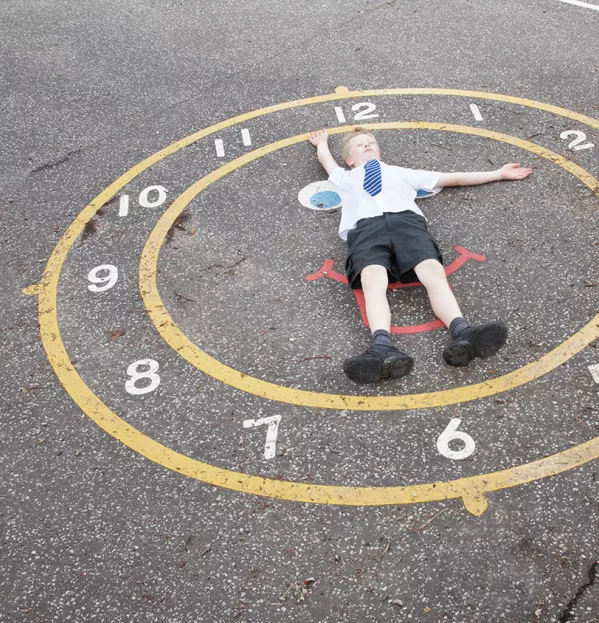- Home
- Teaching & Learning
- General
- Do we give pupils long enough breaktimes?
Do we give pupils long enough breaktimes?

The theme for this year’s World Teachers’ Day is “Teachers: Leading in crisis, reimagining the future”. To mark the occasion, we are putting live, for 24 hours, our special issue where teachers and other experts reimagine what education could look like. For access beyond World Teachers’ Day, and to get exclusive weekly content from Tes, subscribe here. The rest of the articles from this special issue can be found here.
If you were asked to pinpoint your greatest achievement as a school pupil, what would it be? Mine was managing to secure a third helping of tapioca pudding (with jam) one lunchtime back in 1989. It’s an accomplishment that would not have been possible without our hour-and-a-half lunch break.
Children today can only dream of such an extended period out of class in the middle of the day. Since 1995, breaktimes have been reduced by 45 minutes per week for key stage 1 children, and by 65 minutes per week for students in secondary education.
How do we know that? Anecdotally, many teachers report that breaktimes have got shorter. But Ed Baines and Peter Blatchford of the UCL Institute of Education actually put a figure on the time lost. They led the BaSiS (Breaktime and Social Life in Schools) study, collecting data about the main features of break and lunchtimes, as well as pupils’ views and experiences of social life in and out of school.
The study involved a survey of state-funded and independent primary and secondary schools in England. We asked Baines the following questions to find out more:
Why are breaktimes becoming shorter? And why are there fewer of them?
“One of the reasons schools give for shortening breaks is managing behaviour. But another factor is that if focus is just on the academic and getting exams, then breaktimes are not seen as a central part of the school’s purpose.”
What are children missing out on with breaktimes reduced?
“When playing and socialising, children develop social, emotional and cognitive skills, which are not really learned in the classroom setting. They are free to make choices when there is no adult around to supervise.
“In primary schools, where children are playing, they are also making rules and democratising - when deciding what to play and what to do with rule breakers. These are important social and moral lessons.
“Adults tend to perceive breaks as ‘time out’ and as something more functional, but for children, they are opportunities to develop skills they don’t have. Peter Blatchford often says that schools do not make enough of the social, emotional and moral lessons that come out of these [breaktimes]. They could easily do that by feeding them into PSHE lessons and debates.
“Breaktimes can also be about physical activity. There is a strong suggestion that approximately 40 per cent of a child’s daily exercise is achieved during these times. Although it will vary for different children.
“Finally, breaktimes are important when it comes to young people’s motivation and wellbeing: if breaktimes are reduced, then you reduce the willingness of young people to come to school. Friends are a key motivator - it’s the main trade-off.”
Does your research suggest that some of our most disadvantaged children suffer more through reduced breaktimes?
“The study suggested that schools with a higher number of children entitled to free school meals had less total time for breaks. There is a negative correlation between disadvantage and total breaktime.
“We only found this within the primary school data and not for secondary schools. Nevertheless, this is complex and there is a wide range of possible reasons for the finding, and we need to do further work to really unpick it.
“It may be that these schools with higher levels of disadvantage feel that they need to invest more time in coverage of the curriculum, or that they have shortened breaks in order to manage behaviour, or that they have fewer resources available to supervise and support school breaks. Alternatively, these schools might be based in more urban areas and be aiming for a shorter school day.”
So, how do we move forwards? Should there be a minimum time requirement for breaktime?
“The problem with setting a minimum time is that it would be arbitrary, in a sense, as there is not the research to say what the ‘ideal’ amount is. Also, everyone moves towards the minimum or the average amount. This could mean a further reduction [in breaktimes] in some schools.
“I do think that policymakers should consider legislating for time for pupils to have breaks, but it is also important to ensure that the quality of the breaktime experience is good. There is no point in legislating for breaks if this means that children have a poor-quality experience or that there is very little to do that interests them during their breaks.
“Secondary school break spaces can be bleak [compared with primary schools], with very little offered, other than to hang out, talk and eat. There’s a lack of thinking.
“Ensuring that all children have positive breaktimes with a range of exciting resources and opportunities available to them to choose from is equally important, whether children are 5 or 15.”
Gemma Corby is a freelance journalist
This article originally appeared in the 29 May 2020 issue under the headline “Do we need to make more room for breaktimes?”
You need a Tes subscription to read this article
Subscribe now to read this article and get other subscriber-only content:
- Unlimited access to all Tes magazine content
- Exclusive subscriber-only stories
- Award-winning email newsletters
Already a subscriber? Log in
You need a subscription to read this article
Subscribe now to read this article and get other subscriber-only content, including:
- Unlimited access to all Tes magazine content
- Exclusive subscriber-only stories
- Award-winning email newsletters
topics in this article



